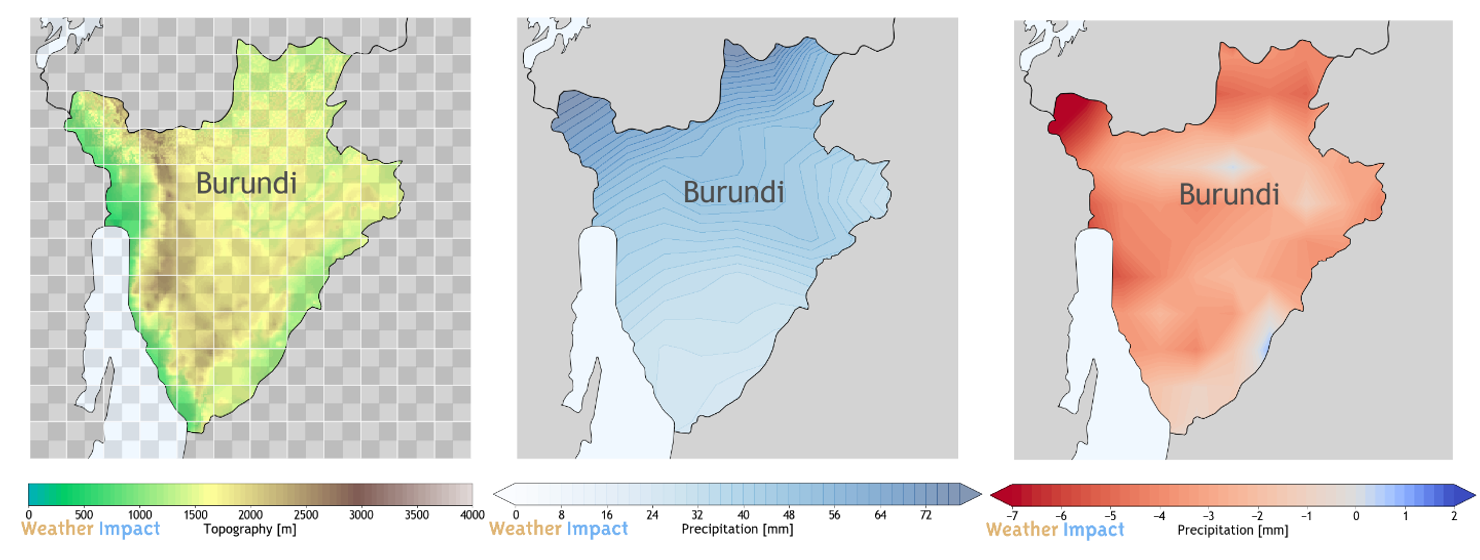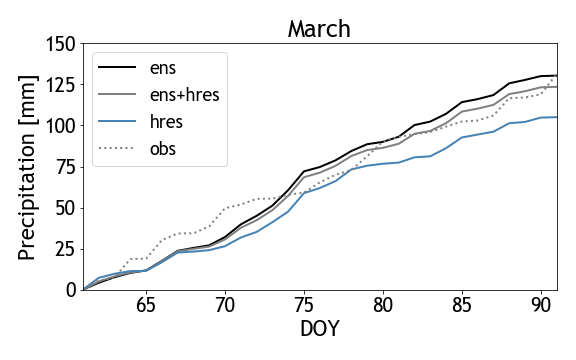Improvement of our precipitation forecast
Combining ensemble and high-resolution ECMWF data
At Weather Impact, we are continuously improving our weather forecasts. We have recently combined the ECMWF ensemble and high-resolution forecasts in order to deliver a new combined forecast with best features of both products. The ensemble forecast has a spatial resolution of 18 km, which is too coarse to resolve small-scale precipitation patterns, however it does contain a range of future weather possibilities. The high-resolution simulation (9 km resolution) is generally of higher quality than the ensemble forecast but it only contains 1 possible outcome of future weather. It can therefore not be used to define a likelihood for events to occur. Combining the ensemble and high-resolution forecasts results in a forecast at 9 km resolution with its corresponding likelihood. This concept is unique for weather forecasts, especially in Africa.
In the figures below the effect of grid resolution between the ensemble and high-resolution forecasts is shown. Also the precipitation sums for March 2019 are shown, as well the difference between the new product and ensemble forecast for that specific month. Interesting is that the combined product projects less precipitation for almost all regions, indicating the traditional ensemble forecast might overestimates precipitation for Burundi.
Left panel: The ensemble and high-resolution model grid with its topography for Burundi. The white outlines indicate the coarse resolution grid and the chess-coloured panels the high-resolution grid. Middle panel: Precipitation sums for March 2019 for the ensemble forecast and right panel: The difference in precipitation sum between the combined product and ensemble forecast.
Validation
In Burundi we have set up, as part of the Gap4all project, a citizen-based observation network consisting of farmers who send their precipitation measurements by phone. We retrieve daily precipitation measurements of more than 60 locations throughout the country. This unique dataset allows us to validate our precipitation forecasts for Burundi. In the figure below the validation of the different forecasts is shown for March 2019. Here we see indeed the ensemble forecast overestimates the observations and the new product brings forecasted precipitation amounts closer to reality.
Accumulated precipitation for different type of forecasts and observations in Burundi for March 2019. Ens=ensemble, ens+hres is the combined product, hres is the high-resolution forecast and obs are the observations, DOY=day of year. The ensemble mean overestimates the observations and the combined product is closest to our observations.
The precipitation bias over total 2019 is lowered by 80% with this new combined product compared to the old traditional ensemble forecast. With this refined product we can deliver higher quality and more local precipitation forecasts to farmers in Africa.



